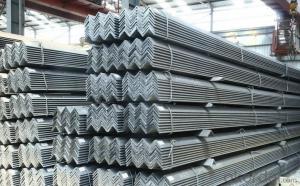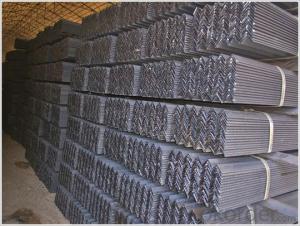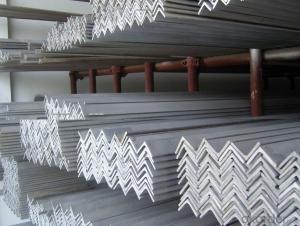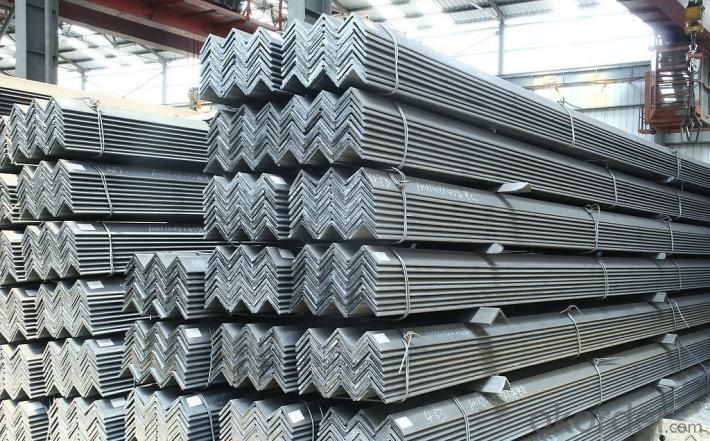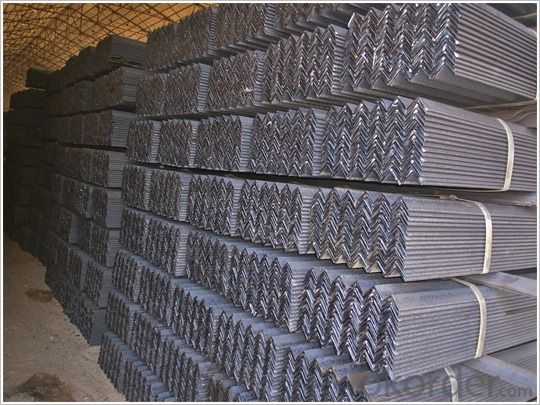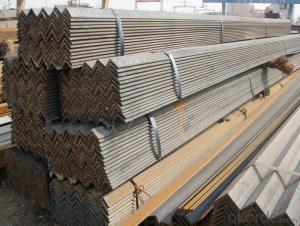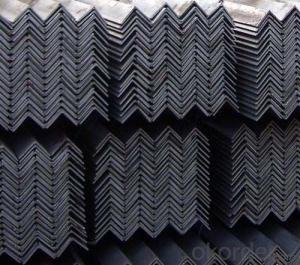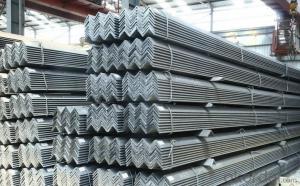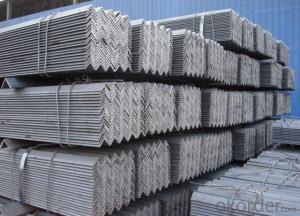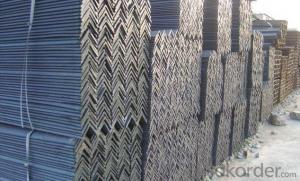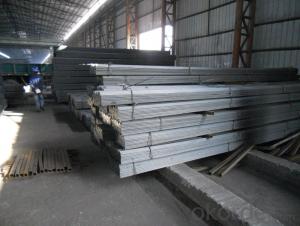Steel Equal Angle with Good Quality 180mm*180mm
- Loading Port:
- Tianjin
- Payment Terms:
- TT OR LC
- Min Order Qty:
- 100 m.t.
- Supply Capability:
- 15000 m.t./month
OKorder Service Pledge
OKorder Financial Service
You Might Also Like
Specification
Specifications of Steel Equal Angle with Good Quality 180mm*180mm
1. Invoicing on theoretical weight or actual weight as customer request
2. Length: 6m and 12m
3. Sizes:
| Size(mm) | Mass(kg/m) | Size(mm) | Mass(kg/m) |
| 180*180*12 | 33.159 | 180*180*16 | 43.542 |
| 180*180*14 | 38.383 | 180*180*18 | 48.634 |
Packaging & Delivery of Steel Equal Angle with Good Quality 180mm*180mm:
1. Packing: it is nude packed in bundles by steel wire rod
2. Bundle weight: not more than 3.5MT for bulk vessel; less than 3 MT for container load
3. Marks:
-Color marking: There will be color marking on both end of the bundle for the cargo delivered by bulk vessel. That makes it easily to distinguish at the destination port.
-Tag mark: there will be tag mark tied up on the bundles. The information usually including supplier logo and name, product name, made in China, shipping marks and other information request by the customer.
If loading by container the marking is not needed, but we will prepare it as customer request.
FAQ:
Q1: Why buy Materials & Equipment from OKorder.com?
A1: All products offered byOKorder.com are carefully selected from China's most reliable manufacturing enterprises. Through its ISO certifications, OKorder.com adheres to the highest standards and a commitment to supply chain safety and customer satisfaction.
Q2: How do we guarantee the quality of our products?
A2: We have established an advanced quality management system which conducts strict quality tests at every step, from raw materials to the final product. At the same time, we provide extensive follow-up service assurances as required.
Q3: How soon can we receive the product after purchase?
A3: Within three days of placing an order, we will begin production. The specific shipping date is dependent upon international and government factors, but is typically 1 to 2 months.
Q4: How many tons per bundle?
A4: Around 2-3tons
Q5: How many tons can be loaded into one 20ft container?
A5: Around 23—25tons(6m)
Q6: How many tons can be loaded into one 40ft container?
A6: Around 23—25tons(12m)
Q7: How to avoid the rust after deliver the goods to the loading port?
A7: We will keep the goods at the port covered with water-proof material
Production flow of Steel Equal Angle with Good Quality 180mm*180mm:
Material prepare (billet) —heat up—rough rolling—precision rolling—cooling—packing—storage and transportation
Images of Steel Equal Angle with Good Quality 180mm*180mm:
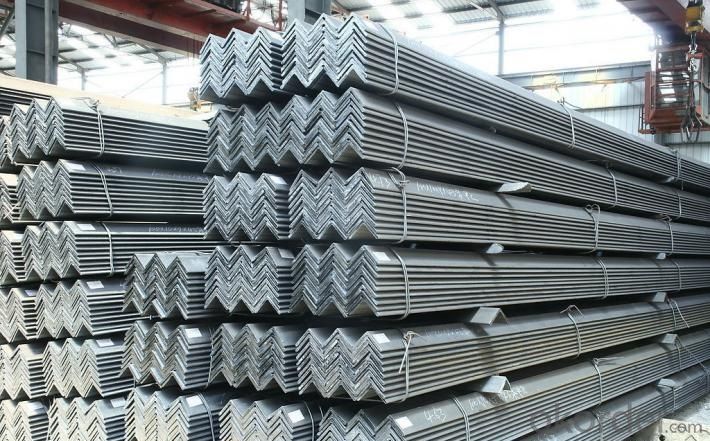
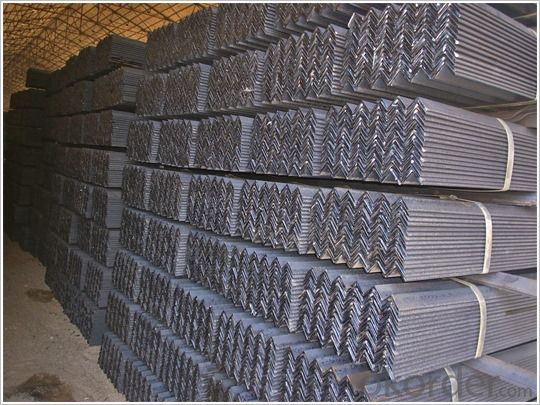
- Q: Can steel angles be used in seismic or high-wind areas?
- Steel angles can indeed be utilized in areas that experience seismic activity or strong winds. Their strength and durability make them a popular choice in construction. Steel angles serve as a reliable source of structural support and are capable of withstanding seismic forces and high winds, as long as they are designed and installed correctly. It is important to adhere to specific building codes and regulations when using steel angles in these areas. These codes and regulations are in place to guarantee that structures can withstand the forces generated by earthquakes or strong winds. To meet the required safety standards, engineers must consider various factors, such as the appropriate size, configuration, and connection details of the steel angles.
- Q: How do you determine the required length of a steel angle for a specific application?
- To determine the required length of a steel angle for a specific application, you typically need to consider the dimensions and requirements of the project. This involves taking measurements, understanding the load or weight it will bear, and considering any necessary safety factors. Consulting structural engineering codes or guidelines can also provide valuable information to ensure the angle is appropriately sized for the intended use.
- Q: Are steel angles prone to rust or corrosion?
- Yes, steel angles are prone to rust or corrosion. Steel, when exposed to oxygen and moisture, can undergo a chemical reaction called oxidation, resulting in the formation of iron oxide, commonly known as rust. This process can weaken the structural integrity of the steel angles over time. To prevent or minimize rust or corrosion, steel angles are often coated with protective layers, such as paint, galvanization, or other anti-corrosion treatments. Regular maintenance and inspection are also crucial to identify and address any signs of rust or corrosion early on to prolong the longevity and performance of steel angles.
- Q: Can steel angles be used in the construction of hotels?
- Yes, steel angles can be used in the construction of hotels. Steel angles are commonly used in construction due to their durability, strength, and versatility. They can be used for a variety of purposes in hotel construction, such as supporting structural beams, reinforcing concrete slabs, framing walls, and creating architectural features. Steel angles provide stability and structural integrity, making them ideal for high-rise buildings like hotels. Additionally, steel angles are cost-effective and readily available, making them a practical choice for hotel construction projects.
- Q: How do steel angles perform in terms of fire resistance?
- Steel angles generally have good fire resistance due to the inherent properties of steel. Steel is a non-combustible material, meaning it does not burn or contribute to the spread of fire. Steel angles are often used in structural applications where fire protection is required, such as in building construction or industrial facilities. In the event of a fire, steel angles can withstand high temperatures without losing their structural integrity. This is because steel has a high melting point and does not weaken or deform easily under heat. Additionally, steel has a low thermal conductivity, meaning it does not transfer heat quickly, which further enhances its fire resistance. However, it is important to note that while steel angles have good fire resistance, they can still be affected by fire if exposed to extremely high temperatures for an extended period. In such cases, steel can experience significant thermal expansion and may eventually lose strength. Therefore, it is crucial to provide appropriate fire protection measures, such as fire-resistant coatings or fireproofing materials, to enhance the fire resistance of steel angles in critical applications. Overall, steel angles are considered to have favorable fire resistance properties and are widely used in various industries where fire protection is essential. However, proper fire safety measures should always be implemented to ensure the highest level of fire resistance and minimize any potential risks associated with fire exposure.
- Q: How do you determine the required angle size for a specific load?
- To determine the required angle size for a specific load, you need to consider factors such as the weight and distribution of the load, the material of the angle, and the intended use and safety requirements. Calculations involving statics, engineering principles, and load-bearing capacity are typically used to determine the appropriate angle size to ensure sufficient strength and stability for the specific load. It is important to consult relevant engineering standards and guidelines or seek professional advice for accurate and reliable calculations.
- Q: How do you prevent steel angles from twisting?
- To prevent steel angles from twisting, various methods can be utilized: 1. Accurate fabrication techniques: Ensuring precise and accurate fabrication of steel angles is crucial. This involves making straight and square cuts to maintain the angles' structural integrity and prevent twisting. 2. Implementation of bracing and supports: During installation, it is important to use suitable bracing and supports to provide stability. Temporary supports, diagonal bracing, or cross bracing can be employed, depending on the specific application. 3. Utilization of proper welding techniques: When joining steel angles, employing appropriate welding techniques helps minimize distortion and twisting. This includes selecting the correct welding process, controlling heat effectively, and using suitable fixturing to hold the angles in place during welding. 4. Adoption of anchoring methods: Depending on the application, anchoring methods such as bolting, screwing, or welding the steel angles to other structural elements can prevent twisting. These methods enhance stability and prevent rotation or twisting when subjected to external forces. 5. Regular inspections and maintenance: Conducting frequent inspections is important to identify any signs of twisting or distortion in steel angles. If any issues are detected, immediate corrective action should be taken to rectify the problem and prevent further twisting. By combining accurate fabrication, proper bracing and supports, suitable welding techniques, anchoring methods, and regular maintenance, steel angles can be effectively prevented from twisting, ensuring their structural stability in the long run.
- Q: What is the typical hardness of steel angles?
- The typical hardness of steel angles can vary depending on the specific grade and manufacturing process, but it is generally within the range of 150 to 200 Brinell Hardness Number (BHN).
- Q: How do steel angles perform in terms of energy efficiency?
- Steel angles are not directly associated with energy efficiency. Energy efficiency is typically evaluated based on factors such as insulation, building design, and the use of energy-efficient appliances or systems. However, steel angles can be used in construction projects to provide structural support, which indirectly contributes to the overall energy efficiency of a building by ensuring its stability and durability.
Send your message to us
Steel Equal Angle with Good Quality 180mm*180mm
- Loading Port:
- Tianjin
- Payment Terms:
- TT OR LC
- Min Order Qty:
- 100 m.t.
- Supply Capability:
- 15000 m.t./month
OKorder Service Pledge
OKorder Financial Service
Similar products
Hot products
Hot Searches
Related keywords
